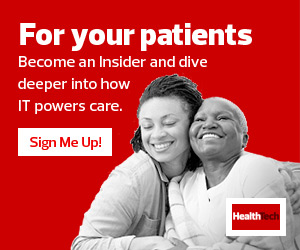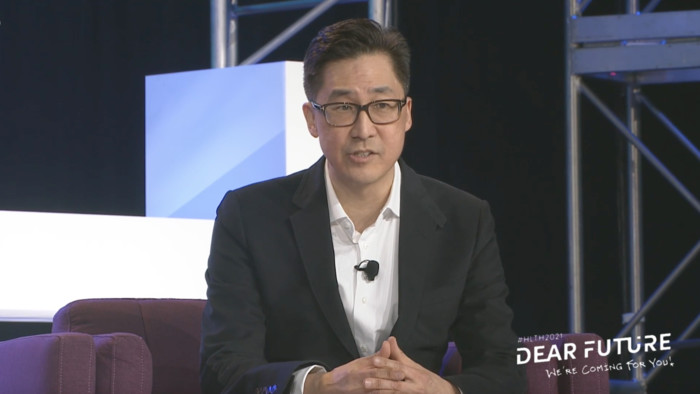Microsoft’s Expanding Role in Healthcare
Microsoft acquired Nuance earlier this year in a move to accelerate industry-specific cloud offerings to support customers and partners responding to disruption and new opportunities, according to a statement about the acquisition. Its efforts include Microsoft Cloud for Healthcare, introduced last year.
Rhew explained that Nuance’s AI- and voice-based natural language processing technology is having a major impact in healthcare by reducing clinician burnout. As clinicians see patients, they document those encounters in their electronic health records (EHRs). With Nuance technology, information is converted from voice to text, understood in context, turned into progress notes and integrated into the medical record.
“We saw it was able to reduce the amount of time needed to document by 50 percent, or even greater. It had a dramatic impact on clinician satisfaction, enabling them to spend less time documenting and more time seeing patients or on other tasks,” said Rhew. “We’re excited to see where it goes from here.”
Microsoft sees an opportunity for its technology to help organizations and individuals achieve more than they are able to now. Rhew said the company is currently focusing on how organizations can leverage cloud technology, AI and care collaboration tools to make them work seamlessly through interoperability with the technology Microsoft provides as well as other healthcare software, such as EHRs.
LEARN MORE: How can healthcare leverage natural language processing for medical records?
“We want to create integration into clinical workflows and patient lifestyles to create a more seamless experience. We look to enhance that experience for patients and providers to ultimately improve outcomes,” he said.
Partnerships are a major focus of Microsoft’s healthcare strategy. The company recently announced a partnership with Truveta, a data platform owned and governed by 17 U.S. health provider member organizations administering more than 15 percent of clinical care in the U.S, to use Microsoft Azure to create a platform that will consolidate patient data and create insights to better patient outcomes.
Rhew said Microsoft is also working with companies researching how COVID-19 is treated, using cloud computing with AI tools that would be difficult for them to build on their own.
Other healthcare initiatives have included interoperability between Microsoft Teams and the Cerner EHR. The company has also made Teams more HIPAA compliant following increased telehealth usage during the pandemic.
How the Pandemic Impacted Microsoft’s Healthcare Strategy
“In the process of delivering technology virtually and trying to provide value to organizations and individuals, it created challenges. One was around the digital divide,” said Rhew.
He explained that the company has been working to address health disparities through ongoing initiatives such as Airband, which brings broadband to rural and underserved communities globally. The company has provided affordable broadband to 1.4 million people in the U.S. through partnerships.
During the pandemic, Microsoft focused on its public-private partnerships to deliver essential health services, including COVID-19 vaccinations, to the underserved and vulnerable.
“This effort requires technology on the back end to securely integrate data with health records,” said Rhew.
Through the data collected, partners were able to identify communities where vaccine hesitancy existed and connect residents with trusted individuals who could provide more information.
“We had communities that knew what they needed to do but needed technology for integration. A coalition of public-private partners got together, and the initiative was centrally managed but locally driven,” said Rhew.











